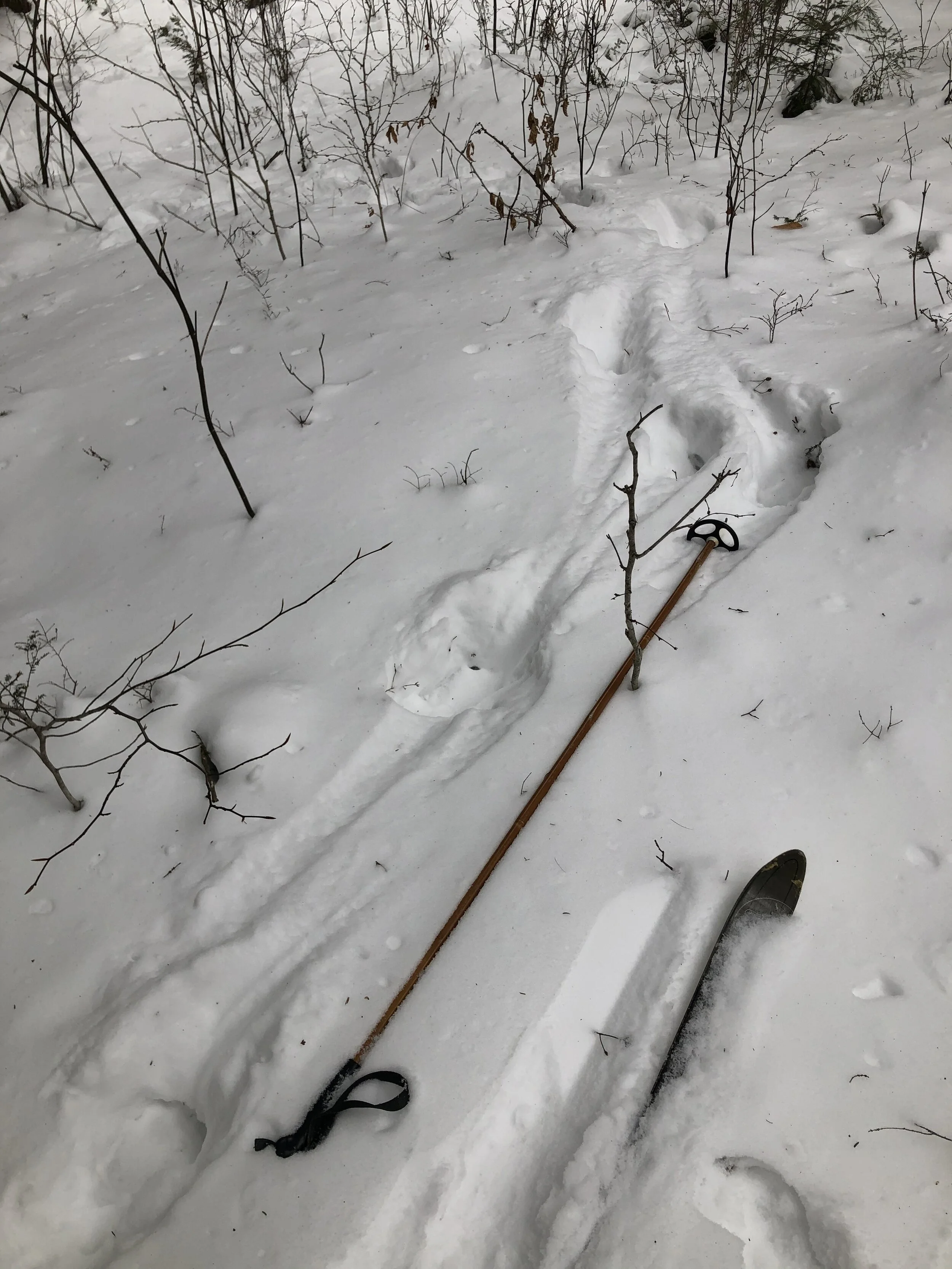Mystery tracks! Who was here?
Photo: Lynne Flaccus
Who was here? This animal was walking, bedded down, and left some scat behind.
What are the clues? Look for the size of prints and how deep they are in the snow. How far apart are the prints, or what is the stride of the animal? The scat is oval and large—at least an inch—and in clumps. The forest here is mostly hemlock in the overstory, and hobblebush underneath.
Photo: Lynne Flaccus
Moose! Check out the antler! Male moose and deer drop their antlers during the winter months, an energy saving strategy when the snows are deep. Look for dropped antlers in areas where deer and moose winter, dense stands of conifers where the snow depth is less and browse is easily available. In spring, new antler growth will start again to replace what they have lost. Antlers are some of the fastest growing bones in the natural world!
Who was here?
Photo: Lynne Flaccus
Who was here? Notice the scat, and the two “holes” in the snow. Notice how the tracks leave from the exit hole (near the glove)?
This was a place where a ruffed grouse (sometimes called a partridge) entered the snow and burrowed beneath the fluffy snow surface for the night. The snow provided a hiding spot and insulation from the cold night time temperatures. Ruffed grouse often punch through the snow from above and tunnel a short ways before emerging in the morning.
As winter rolls into spring, you may see less of this behavior as crusty snow develops. Instead, ruffed grouse will roost in conifer thickets for the night. Look for grouse in the late winter and early spring at the tops of aspen and birch trees where they feed on the tasty buds at the tips of branches!
Banner image: Moose tracks in the woods. Photo: Lynne Flaccus




